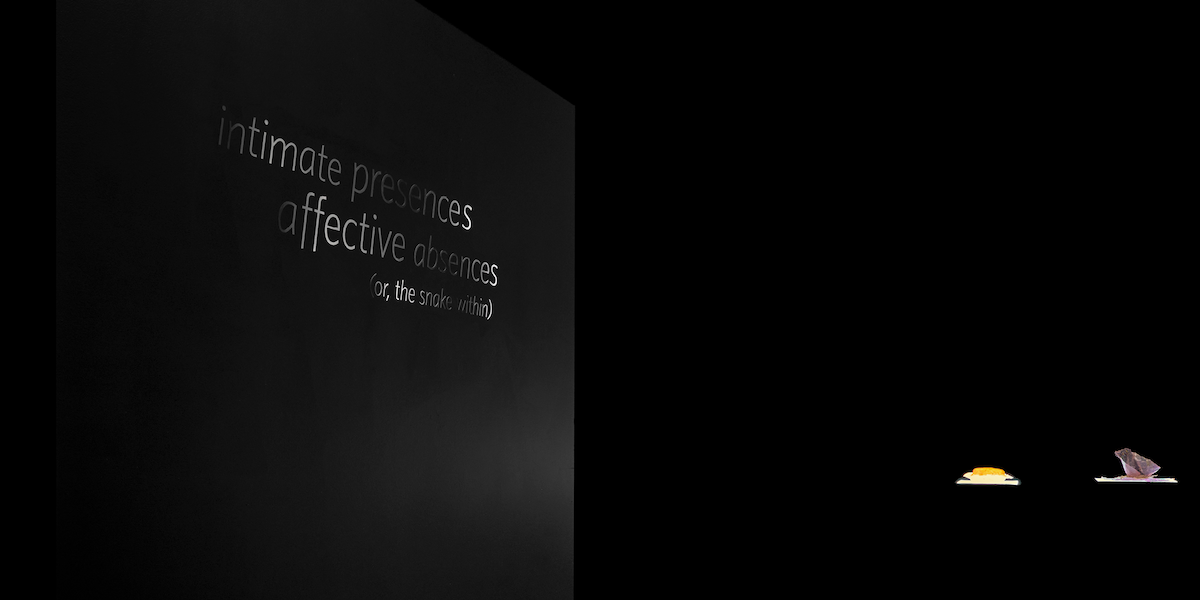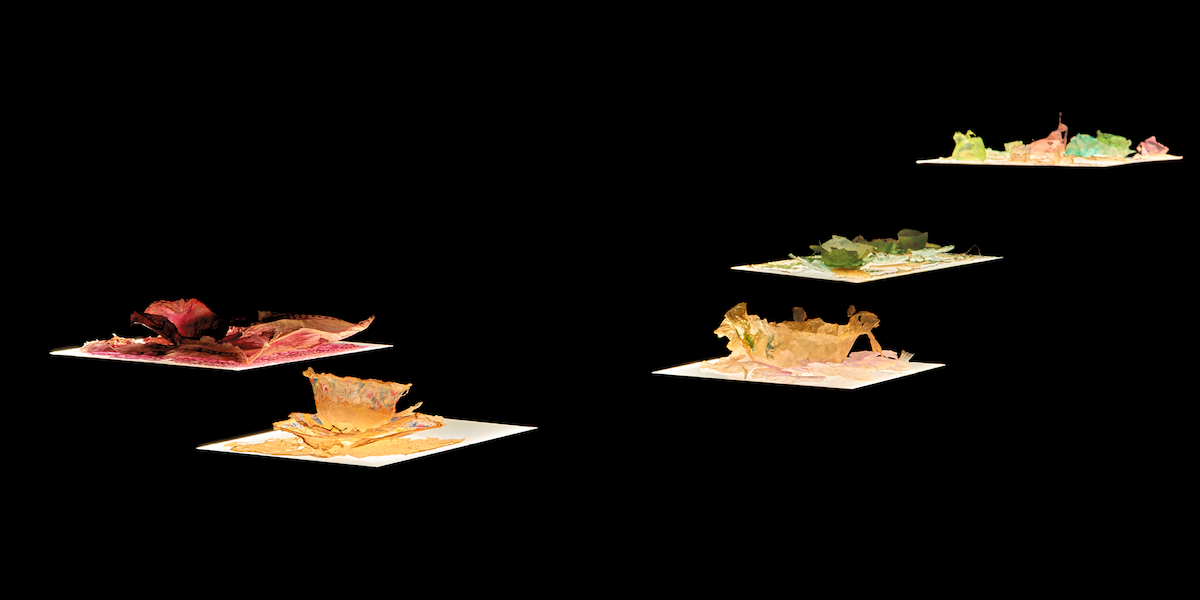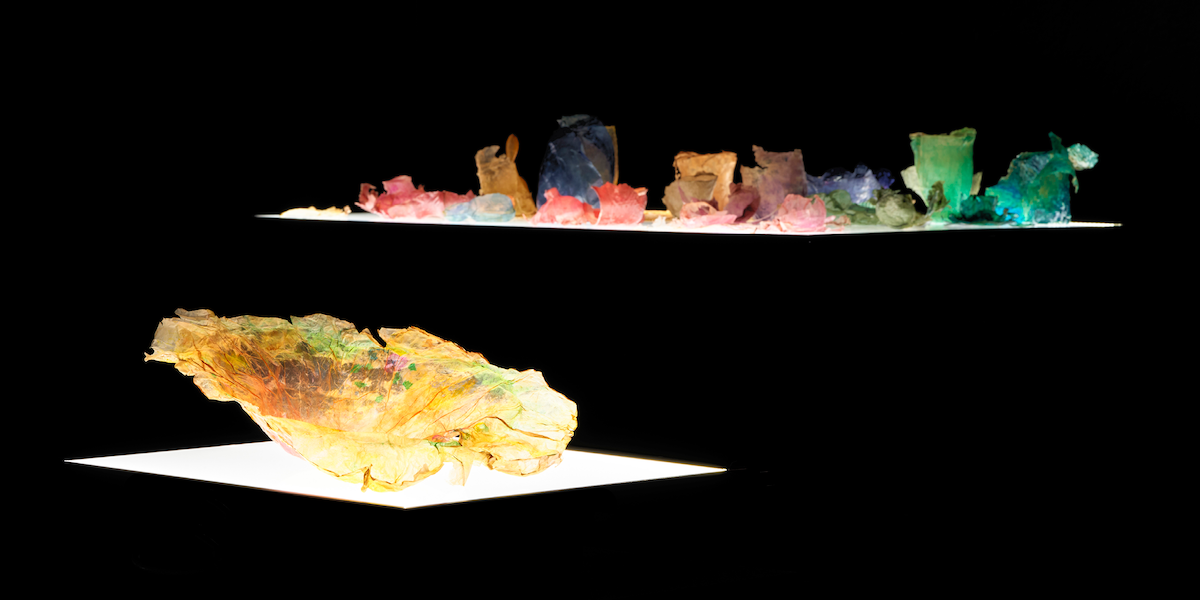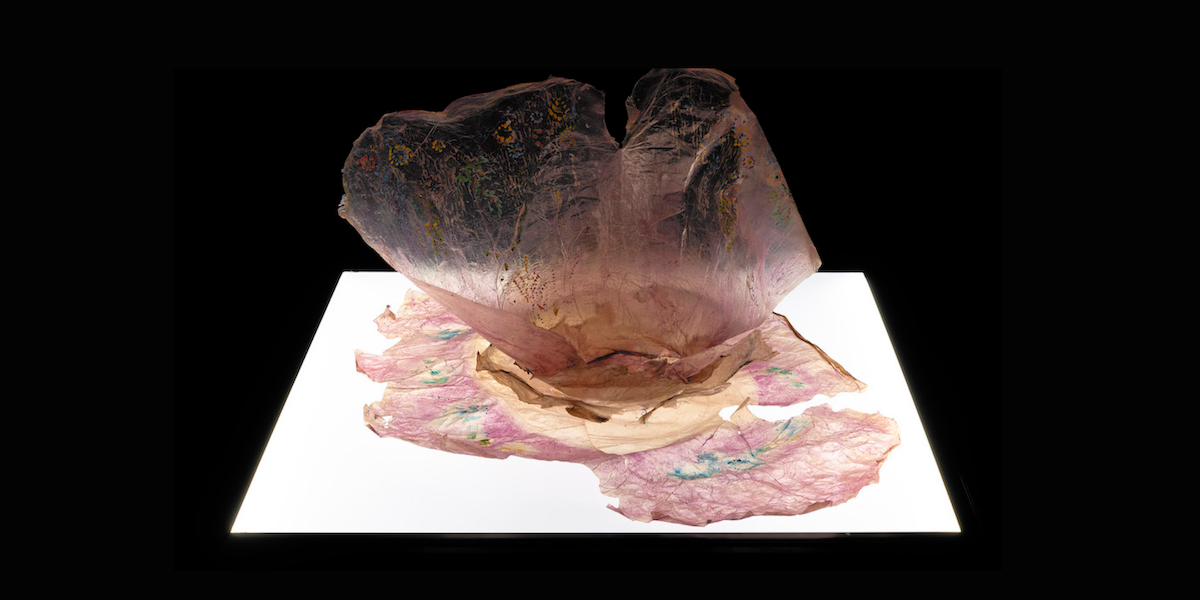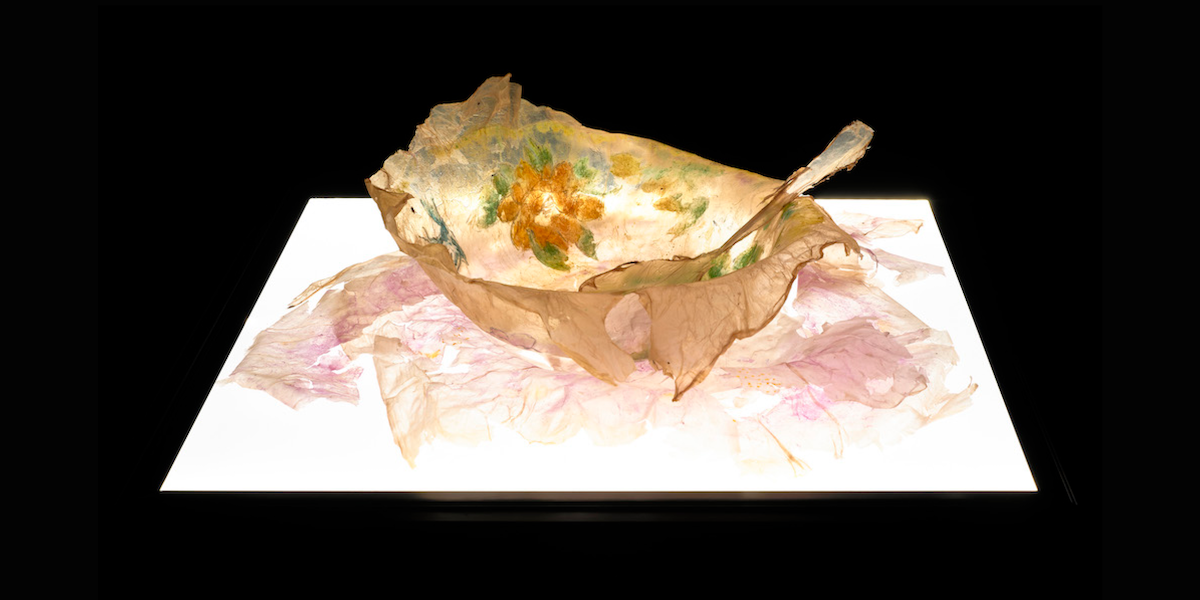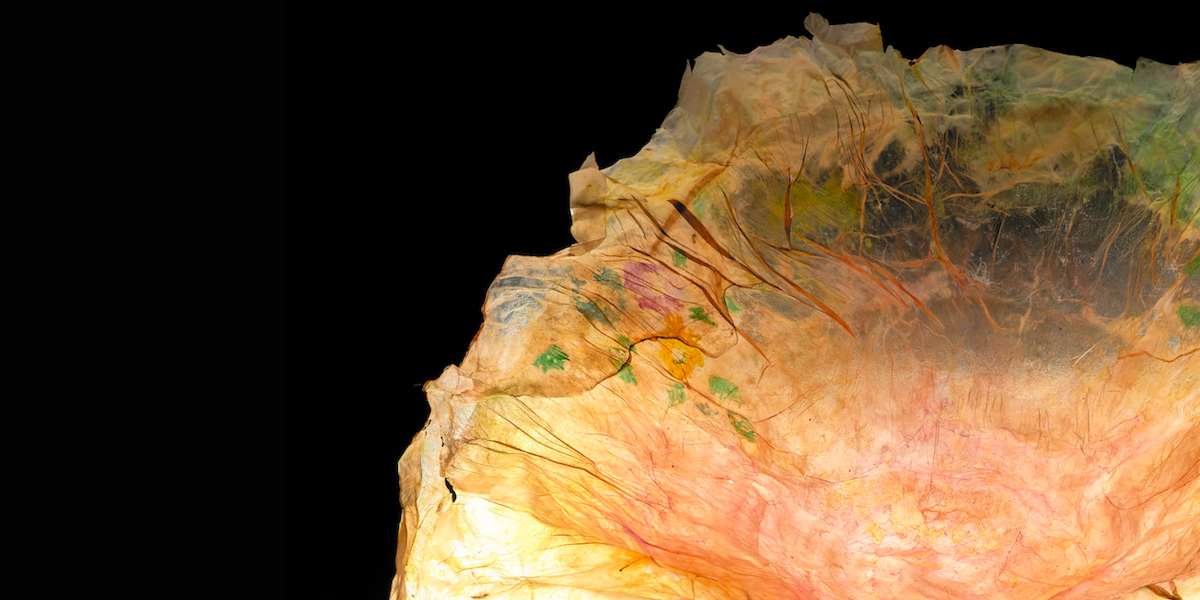INTIMATE PRESENCES/AFFECTIVE ABSENCES (or the snake within)
AN INSTALLATION BY LEORA FARBER
8 October - 28 November, 2020 | FADA Gallery, University of Johannesburg
INTIMATE PRESENCES/AFFECTIVE ABSENCES (or the snake within)
The ‘impressions’ of domestic objects which comprise Leora Farber’s installation, intimate presences/affective absences (or, the snake within), hover in a liminal space of constant becoming. Slipping in-between life and death; visibility and invisibility; materiality and immateriality; human and non-human; actuality and imagination; being and non-being; (semi)living and non-living, they oscillate in a state of in-betweenness. While the impressions create a semblance of presence, of immediacy, of touch, their delineation of absence ironically defines what they are. Materially corporeal yet ethereal and spectral, they appear to inhabit varying states of atrophy. As such, they may act as affective carriers of memory, evoking re-remembrances of familiarity, strangeness, comfort, dis-ease, intimacy, distance, vulnerability, trauma, complicity and loss.
For the past three years, Farber has engaged intensively with bioart – an umbrella term for a range of art forms that critically engage with biology and bioscientific research. ‘Bioartists’ mix artistic and scientific processes, often using live tissues, bacteria, living organisms and life processes as media. In this installation – the first of a series to follow in 2021 and 2022 – Farber presents a highly innovative use of biomaterials, in which impressions are made from a cellulose-fibre that is produced by the symbiotic action of the bacteria Gluconacetobacter xylinus and yeast. This symbiotic culture, which feeds off a mixture of tea and sugar, forms a biofilm at the interface between the liquid nutrient and air. The biofilm grows to form a cellulose fibre that when dehydrated, bears uncanny resemblance to traces of human skin – sloughed off, shed, discarded.
Farber’s impressions reference various design styles, periods and surface patterning. They include items taken from Chinese porcelain and English bone china; some feature blue and white patterns of Chinese origin, such as the willow pattern, which the British copied in their production of 18th century porcelain, and the Dutch reproduced in their ‘Delft blue’ porcelain. These designs, which are still being produced, or reproductions thereof, have become domestic ‘classics’ in many post-colonies. Farber’s impressions of these objects thus resonate as spectral traces of colonial legacies that haunt domestic interiors and broader individual and collective imaginations in post-colonial South Africa. As Verne Harris (2015:20) notes in relation to the archive, “the fragments
in their custody comprise matter out of place. And the whispers of dislocation can be heard. Ghostly voices of other places, of lineages, of origins. … What is present speaks loudly of absences, and what is absent presents itself insistently. Presence and absence unfolding out of one another. The experience of being haunted”. [i]
Farber’s impressions carry hauntological resonances of British and Dutch Imperialism and colonialism, as mechanisms that drove the enculturation of capital. Sugar, tea and porcelain were commodities of colonial commerce that were shipped alongside enslaved peoples, themselves considered fungible objects of trade. Read against this historical backdrop of dispossession, exploitation, displacement and precarity, and through the lens of Dutch and British settler colonialism and apartheid, Farber’s impressions may recall uncanny spectres of disquietude and violence that continue to inhabit the future-present. The exhibition is presented by VIAD and the FADA Gallery, Faculty of Art, Design and Architecture, University of Johannesburg.
[i] Harris, V. 2015. Hauntology, archivy and banditry: an engagement with Derrida and Zapiro. Critical Arts29(1):20; 13.
About Leora Farber
Leora Farber is an artist as well as an Associate Professor in the Faculty of Art, Design and Architecture and Founding Director of the Visual Identities in Art and Design Research Centre (VIAD), University of Johannesburg.
CATALOGUE:
Click here to download PDF
VIDEO RESOURCES:
intimate presences/affective absences (or the snake within)
Panel discussion with Ashraf Jamal & Lize van Robbroeck
MEDIA:
The secret life of green tea by Robyn Sassen

